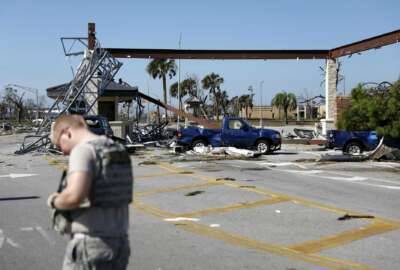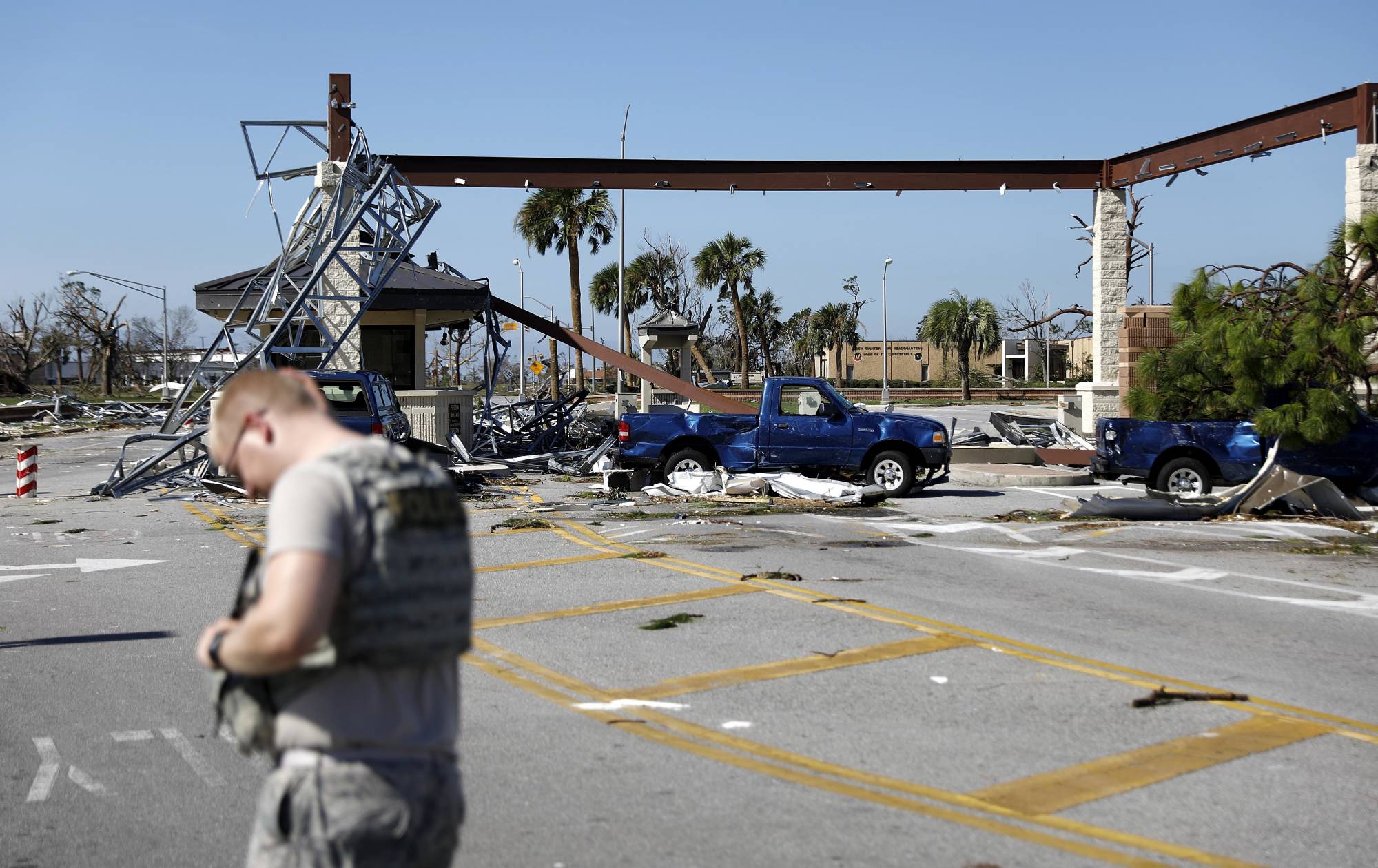
Could more bases end up like Tyndall? GAO says yes if DoD doesn’t change
A new report from the Government Accountability Office says DoD’s guidance for dealing with extreme weather is based on past weather patterns and doesn't take...
After a batch of extreme weather spanning two years and causing billions of dollars of damage to military bases, the Defense Department is still not fully preparing its installations for future climate projections. And it’s not properly advising them about how to build resilient infrastructure for the future.
That’s according to a new report from the Government Accountability Office which states DoD’s guidance for dealing with extreme weather is based on past weather patterns — not taking into account future projections.

“Different types of DoD guidance have tasked the military services with paying attention to climate and extreme weather,” Diana Maurer, director of GAO’s defense capabilities and management team, told Federal News Network. “In many cases at the installation level that wasn’t being done in a very specific or informed way.”
DoD currently owns $1.2 trillion worth of global property holdings. Since 2010, DoD identified climate change as a threat to its operations and installations. Maurer said multiple government and independent studies showed there is an increased risk for flooding, storm surge, sea rise, heat, unusual cold, droughts and wildfires in the coming years.
Some bases were taking these patterns into account with the way the installation was growing by upgrading buildings to be more resilient or creating plans for unexpected weather events. Fifteen of the 23 bases GAO looked at were properly steeling themselves against those threats.
Eight, however, were not.
“Pearl Harbor did not consider extreme weather or climate change in its installation plan,” Maurer said. “If you’re looking to set a plan for what you’re going to build in the future or at what height level you are going to build things; it’s important to consider the potential future impacts of climate change. There is DoD guidance that generally requires that, but what we found was there was no specific requirement at DoD to build climate change or extreme weather into the planning criteria they use in developing their installation plans.”
That has a serious financial impact on future investments, but also the potential for damage to bases in the future.
Related Stories
GAO found those projections were not being made systematically, and that DoD guidance was not giving good information to installations on how they should be factoring those future weather projections into their decisions.
One only has to look at the effects of Hurricanes Michael and Florence to see how devastating extreme weather can be on bases that are not resilient enough.
Tyndall Air Force Base was destroyed by Hurricane Michael last fall. The price tag to repair and rebuild Tyndall is nearly $5 billion. The Air Force had to raid other accounts to clean up the base and in May had to stop work on it because of a lack of funds. That comes as the Air Force is already contending with a $33 billion maintenance backlog.
Camp Lejeune faced a similar fate from Hurricane Florence, and the Marine Corps estimates it will cost $3.6 billion to repair the base.
Congress recently passed an emergency funding bill to help with the repairs for both bases.
Maurer said GAO made eight recommendations to remedy the issues.
“The recommendations come in two buckets,” Maurer said. “The first bucket has to do with the installations. We made recommendations to all three of the military departments and DoD. The gist is that they update their criteria that they use for developing these installation master plans and incorporate climate change and extreme weather and projections about those potentials.”
At the Pentagon level, Maurer said GAO recommended providing better guidance to the installations on which projections to use and how to work them in.
The second bucket has to do with facilities, but is very similar. GAO thought DoD needed to do a better job preparing buildings for climate change and to provide better criteria for building new facilities.
Copyright © 2025 Federal News Network. All rights reserved. This website is not intended for users located within the European Economic Area.
Scott Maucione is a defense reporter for Federal News Network and reports on human capital, workforce and the Defense Department at-large.
Follow @smaucioneWFED





